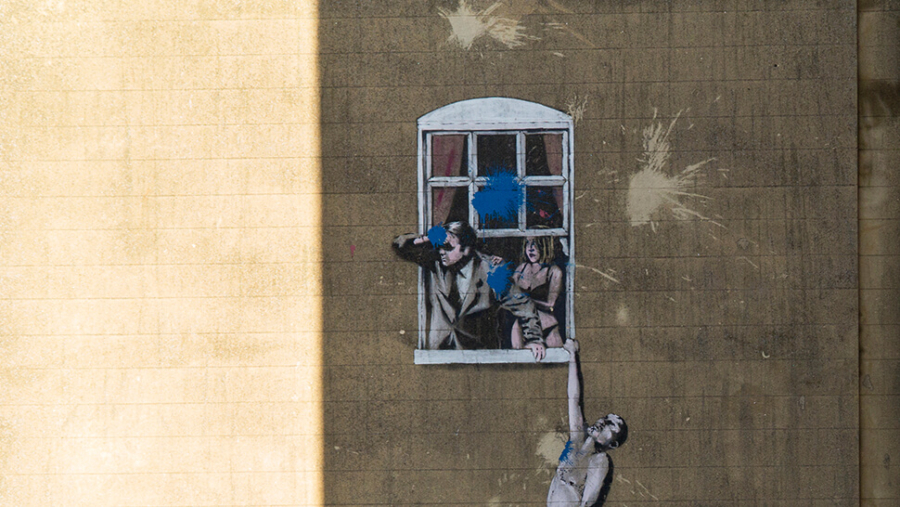

Last year a greeting cards company, called Full Colour Black Limited (FCBL), sought to challenge an EU trade mark registration owned by the elusive graffiti artist Banksy.
FCBL sell a range of cards depicting graffiti art, including a selection that use Banksy artworks. This trade mark battle centred on Banksy’s “Flower Bomber” artwork, an FCBL greeting card with an image of this on it and Banksy’s desire to stop the sale of these cards.
Usually when an artist’s work is used without permission, their recourse would be a claim of copyright infringement. Copyright is an automatic right that can protect, amongst other works, pieces of art (as long as they are original).
Banksy didn’t want to rely on this intellectual property right however, because if he made a claim of copyright infringement, he would have had to reveal his name in order to confirm who created the artwork, and therefore lose his anonymity.
Instead he relied on an EU trade mark that he had filed in 2014 for this piece of artwork, in the name of his company, at the EU Intellectual Property Office (EUIPO) and made a claim of trade mark infringement against FCBL.
When a trade mark is filed, it must be with a bona fide intention to use it, in relation to the goods and services it is registered for. This is, for example, to prevent a trade mark being registered as a defensive move (to stop someone else from using it). Five years after registration, if the owner has not used the trade mark as declared, it can be challenged for non-use and potentially revoked (cancelled) if use cannot be proved.
FCBL counteracted Banksy’s claim of trade mark infringement with a non-use counterclaim based on Banksy not selling any goods under this trade mark, in order to try to invalidate the trade mark and therefore have the trade mark infringement claim thrown out.
Last year, in an attempt to show appropriate use, Banksy opened an online shop and displayed items of merchandise in a shop window in Croydon.
The EUIPO was not fooled; it recognised that he hadn’t sold merchandise or other items using the image until FCBL challenged the trademark in 2019. Furthermore, the EUIPO said it was “clear that Banksy did not have any intention” of using the trade mark when he filed it, and that in 2019 the goods he sold “were created and being sold solely” as an attempt not to lose the trade mark. The EUIPO viewed Banksy’s actions as being “inconsistent with honest practices”.
Banksy’s dim view of intellectual property rights was also mentioned by the EUIPO. “Banksy has chosen to remain anonymous and for the most part to paint graffiti on other people’s property without their permission, rather than to paint it on canvases or his own property,” it said. “He has also chosen to be very vocal regarding his disdain for intellectual property rights.” This was a reference to a quote from one of Banksy’s books that stated “copyright is for losers”.
FCBL have now challenged six further Banksy trade marks on the same grounds of non-use.
This case shows how important it is to carefully draft the specifications (the list of goods and services the mark is intended to cover) that accompany a trade mark application, to ensure no one can challenge your use, but most importantly, remember: use it or lose it!










